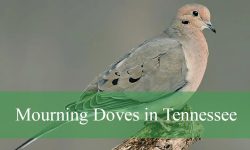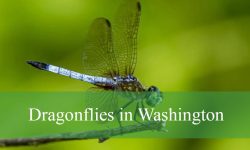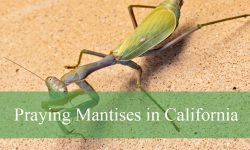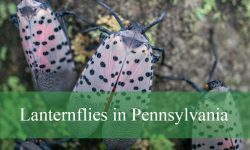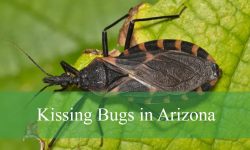Hummingbirds in North Carolina are a delightful sight for any birdwatching enthusiast. Their dazzling colors, rapid wingbeats, and darting movements make them one of the most fascinating birds to observe. Whether you’re relaxing on a porch in the Piedmont or exploring a nature trail in the Blue Ridge Mountains, spotting a hummingbird feels like a special moment.
In North Carolina, several species of hummingbirds visit throughout the year, with the Ruby-throated Hummingbird being the most familiar. Others, like the Rufous or Black-chinned Hummingbird, pass through during migration or appear during the winter months. Each species has its own charm, from iridescent plumage to surprising seasonal habits.
As someone who truly enjoys watching hummingbirds in North Carolina, I’ve come to appreciate not only their beauty but also the subtle differences between each type. This guide will walk you through 11 species you might encounter, along with tips on how to identify them and where to look.
Common Hummingbirds Found in North Carolina
Ruby-throated Hummingbird (Archilochus colubris)
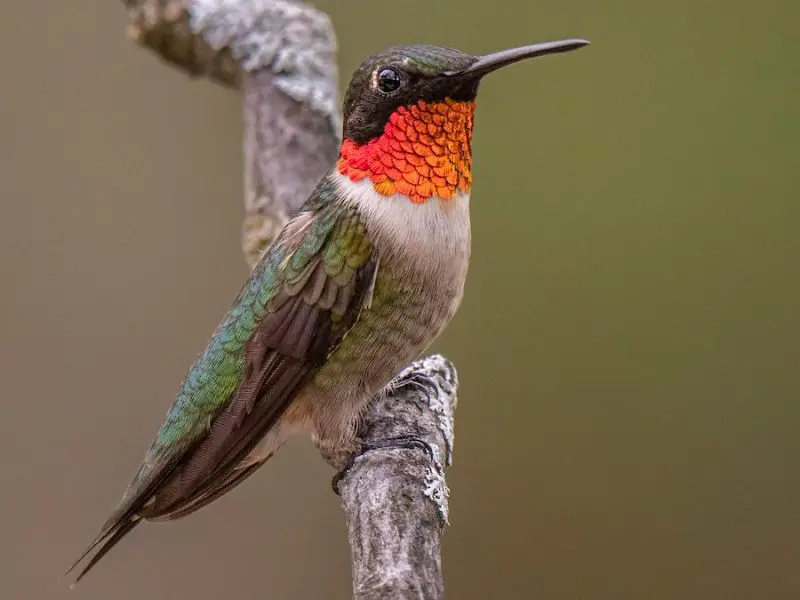
The Ruby-throated Hummingbird is the only hummingbird species that breeds regularly in North Carolina and throughout the eastern United States. This tiny bird measures about 2.8 to 3.5 inches in length, with a wingspan of around 3.1 to 4.3 inches, and weighs no more than a few grams. Males are instantly recognizable by their brilliant ruby-red throat, called a gorget, which glows in the sunlight. Both males and females have metallic green upperparts, though females lack the red throat and have paler underparts.
These hummingbirds are highly energetic and display acrobatic flight skills. They can hover in midair, fly backward, and make sharp turns while chasing away intruders from their feeding areas. Males are territorial and will often guard flower patches or feeders aggressively. During courtship, they perform dramatic diving displays in front of potential mates, flashing their iridescent throat feathers and making buzzing sounds with their wings.
In North Carolina, Ruby-throated Hummingbirds are found in gardens, woodland edges, parks, and rural backyards, especially where native flowers and feeders are available. They prefer habitats with red or tubular flowers such as trumpet vine, bee balm, and coral honeysuckle. Nesting typically takes place in deciduous forests where females build small cup-shaped nests on slender tree branches using plant down and spider silk.
These hummingbirds migrate long distances each year, flying across the Gulf of Mexico to wintering grounds in Central America. In North Carolina, they arrive in spring, usually by late March or early April, and begin their return south in late summer. Most individuals have left the state by early October, though a few may linger along the coast depending on weather conditions and food availability.
Rufous Hummingbird (Selasphorus rufus)
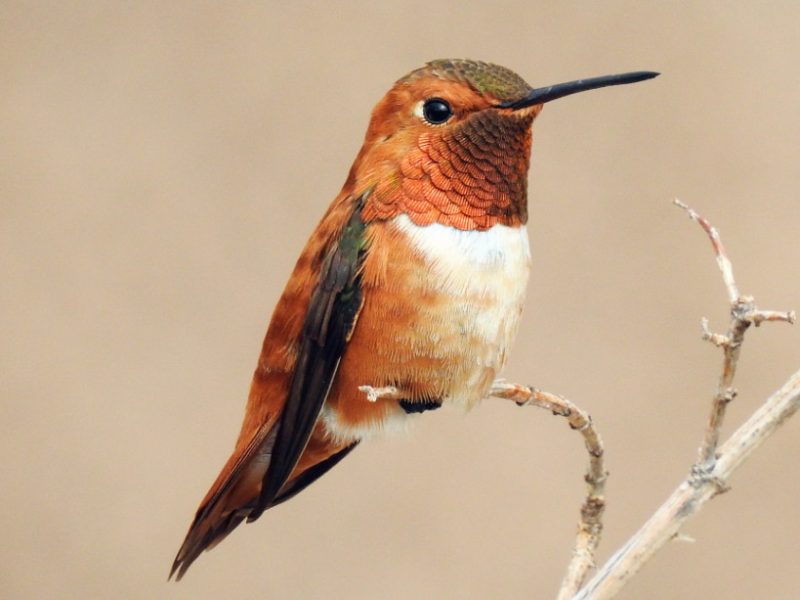
The Rufous Hummingbird is a bold and colorful visitor to North Carolina, most often seen during the fall and winter months. It measures around 2.75 to 3.75 inches in length and has a wingspan of approximately 4 inches. Males are covered in rich orange or rufous plumage with a bright coppery-red throat, while females are greenish above and have rust-colored sides with spots on the throat. Their vibrant coloration and strong personalities make them stand out at backyard feeders.
Known for their aggressive behavior, Rufous Hummingbirds are some of the most territorial of all hummingbird species. Even during migration, they fiercely defend feeding stations, chasing away other hummingbirds, bees, and even larger birds. They exhibit fast, direct flight and are relentless in aerial chases. Males often perform shuttle displays, moving rapidly back and forth in front of rivals or potential mates to assert dominance.
In North Carolina, Rufous Hummingbirds are most commonly observed in the Piedmont and mountain regions during their migration. Though they do not breed in the state, they often overwinter where feeders are maintained. Residential areas with well-stocked feeders and winter-blooming plants provide the best opportunities for sightings. They may remain in these areas for weeks or months if conditions are favorable.
These birds normally breed in the Pacific Northwest and Alaska and migrate to Mexico for winter. Occasionally, individuals veer eastward and appear in states like North Carolina, especially in late fall. This unusual migration route has become more frequently documented in recent decades, likely due to changing climate patterns or increased availability of winter food sources in the Southeast.
Black‑chinned Hummingbird (Archilochus alexandri)
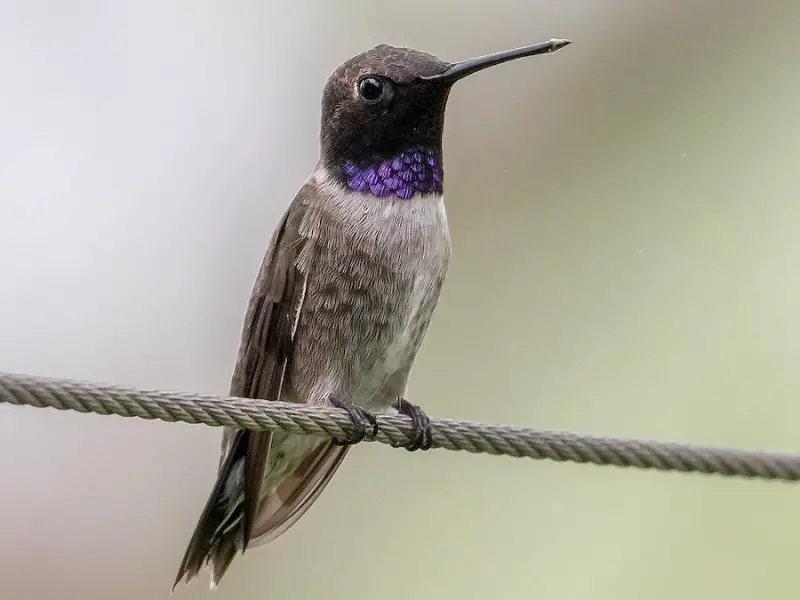
The Black-chinned Hummingbird is a rare and occasional visitor to North Carolina, mainly showing up in late fall and winter. Slightly larger than the Ruby-throated Hummingbird, it reaches about 3.25 to 3.5 inches in length. Males are distinguished by a dark throat with a narrow, iridescent purple band that can appear black in poor light. Females and immature birds resemble Ruby-throated females but have slightly longer, more curved bills and plainer throats.
This species is generally less aggressive than the Rufous Hummingbird but still capable of defending feeding territories when needed. Males are known for perching quietly between feeding bouts, often on high branches with a clear view of their surroundings. They feed frequently throughout the day, relying on nectar from flowers and hummingbird feeders, as well as small insects for protein.
In their usual range, Black-chinned Hummingbirds prefer semi-arid environments, riparian woodlands, and canyon edges. When they appear in North Carolina, they are typically found along the coastal plain, often in gardens and residential yards with active feeders. These rare sightings tend to occur in late fall and may extend into winter if conditions remain mild and food is available.
Although primarily found in the western United States during the breeding season, Black-chinned Hummingbirds migrate to Mexico for the winter. Their appearances in the Southeast, including North Carolina, are considered unusual but are being recorded more frequently. These vagrant individuals may be driven by strong winds, habitat changes, or other environmental factors that disrupt traditional migration paths.
Calliope Hummingbird (Selasphorus calliope)
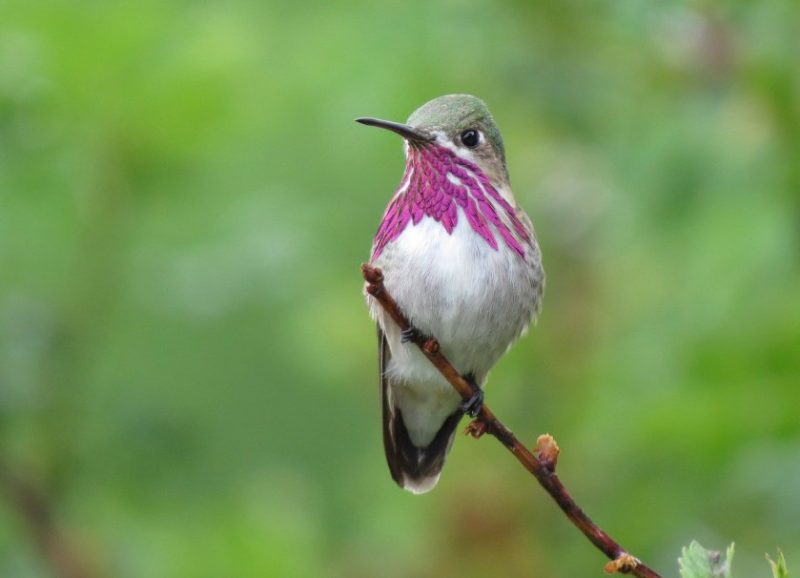
The Calliope Hummingbird is the smallest hummingbird in North America and a rare winter visitor to North Carolina. It measures only about 3 inches in length and weighs around 2.5 to 3.5 grams. Males are especially striking, with bright green backs and unique magenta-purple throat streaks that fan out into a starburst pattern. Females and immatures lack the colorful gorget but retain the green back and pale underparts, making them harder to distinguish from other small species.
Despite its tiny size, the Calliope Hummingbird is feisty and bold, often standing its ground against larger hummingbirds at feeders. Males perform elaborate courtship displays that include dramatic dives and slow, looping figure-eights. During migration and winter, they remain relatively quiet and unobtrusive, spending long periods perched in dense shrubs or trees between feedings.
In North Carolina, Calliope Hummingbirds are rare and typically show up at backyard feeders during the winter months. Most sightings occur in the Piedmont region, often in suburban areas where feeders are maintained year-round. These birds are not easy to detect without close observation, especially when they are not displaying their unique throat feathers.
Normally, Calliope Hummingbirds breed in high-elevation meadows and forests of the western United States and migrate to central Mexico for winter. Their appearance in North Carolina is always a surprise and often draws attention from local birders. These wayward individuals may be influenced by shifts in weather, food availability, or broader changes in migration behavior across North America.
Broad-tailed Hummingbird (Selasphorus platycercus)
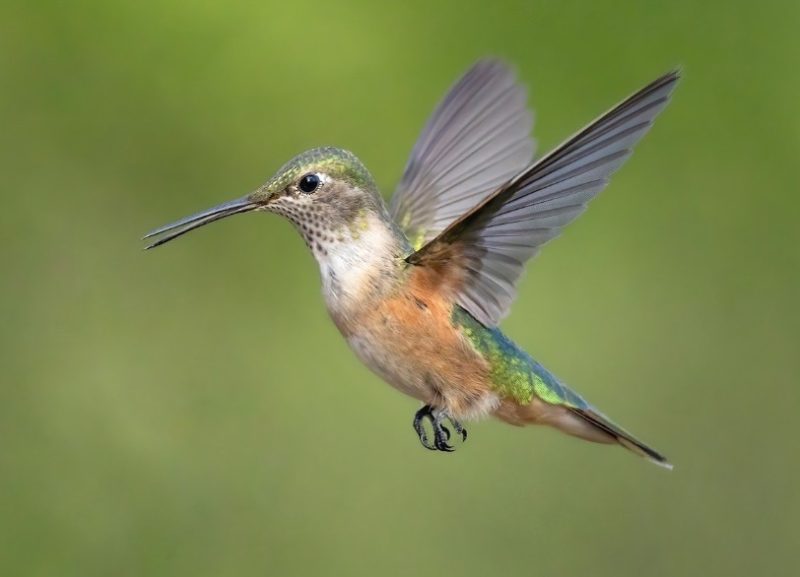
The Broad-tailed Hummingbird is a rare migrant in North Carolina, typically associated with the western United States. Measuring around 3.75 to 4 inches in length, this species is slightly larger than the Ruby-throated Hummingbird. Males are most easily recognized by their shimmering rose-magenta throat patch (gorget), iridescent green backs, and white chest. Females and juveniles lack the bright throat but share the green back and pale underparts, often with faint spotting on the throat.
One of the most distinctive characteristics of the Broad-tailed Hummingbird is the whirring or trilling sound produced by the males’ wings in flight, which serves both a territorial and courtship purpose. These birds are generally solitary outside of the breeding season and often engage in territorial defense around favored feeding sites. Though they feed mainly on nectar, they will also consume small insects caught in midair or plucked from leaves.
In North Carolina, sightings are rare and usually occur during fall migration or occasionally in early spring. Most records come from the Piedmont and mountain regions, particularly where late-season flowers or hummingbird feeders are available. Because they resemble other small hummingbirds, correct identification typically requires close observation or photos.
This species breeds in the mountainous regions of the western U.S., including the Rockies, where they inhabit open forests and meadows. Their appearance in the eastern part of the country is unusual, but occasionally individuals stray far from their typical range. When present in North Carolina, they may remain for several days, especially if food is abundant and temperatures remain mild.
Broad-billed Hummingbird (Cynanthus latirostris)
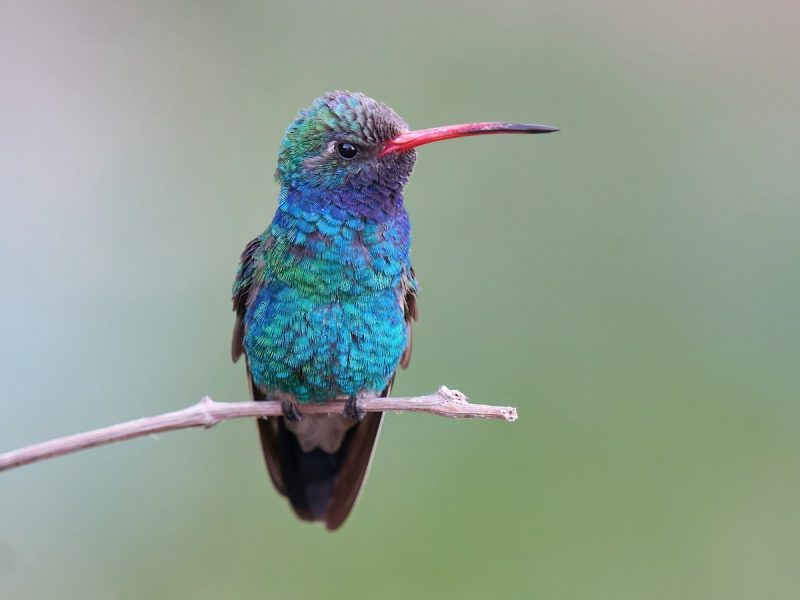
The Broad-billed Hummingbird is a striking species that rarely appears in North Carolina, typically as a vagrant during migration. Adults are around 3.5 to 4 inches in length and are best known for their vivid coloration. Males have bright bluish-green plumage, a brilliant blue throat, and a distinctive red bill with a black tip. Females are less colorful but still show a reddish base to the bill and green upperparts with pale bellies.
Behaviorally, Broad-billed Hummingbirds are active and alert, often seen darting between flowers or feeders with quick, direct flights. Males will aggressively guard feeding areas, even when present far from their usual range. Their vocalizations include high-pitched squeaky calls, and they may be observed hovering and fanning their tails during feeding.
Sightings in North Carolina are extremely rare but have occurred during fall or winter in gardens that maintain hummingbird feeders. The coastal plain and southern Piedmont offer the best chances for spotting this species, particularly when mild winter conditions persist. Their flashy appearance makes them stand out among the more muted eastern species.
Broad-billed Hummingbirds are native to Mexico and the southwestern United States, where they breed in canyons, desert scrub, and riparian areas. Vagrants sometimes wander far beyond their expected range, especially young birds during migration. As more people maintain feeders throughout the year, reports from the eastern U.S., including North Carolina, have increased slightly in frequency.
Buff-bellied Hummingbird (Amazilia yucatanensis)
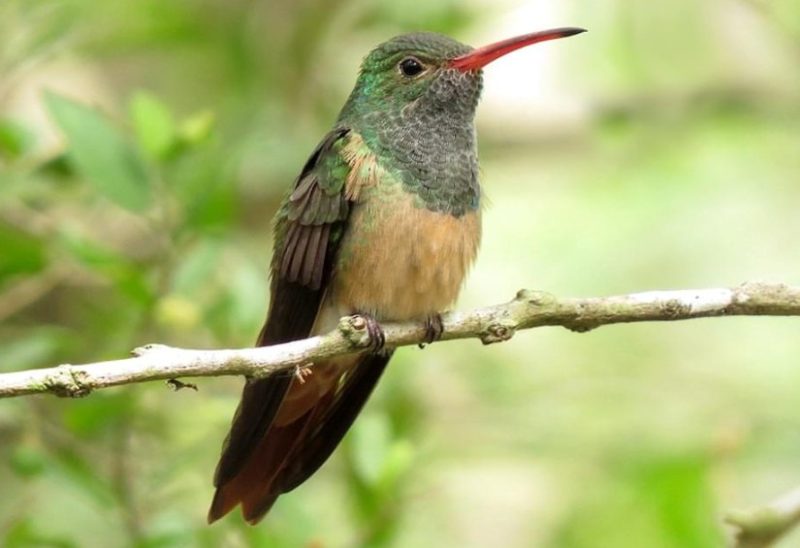
The Buff-bellied Hummingbird is a robust and brightly colored species that occasionally appears in North Carolina during the winter months. It measures about 3.9 to 4.3 inches in length, with metallic green upperparts, a buff to pale cinnamon-colored belly, and a reddish bill tipped in black. Its medium size and colorful plumage make it one of the more visually distinct hummingbirds recorded in the state.
This species is known for its confident and aggressive behavior. It often dominates feeders and flowering shrubs, chasing away smaller species. Males will patrol feeding territories and perch conspicuously to keep watch. Buff-bellied Hummingbirds feed on a wide variety of nectar sources and will also hunt for small insects, which they capture on the wing or pluck from foliage.
Although rare in North Carolina, individuals have been observed overwintering in areas with consistent food sources and warm microclimates. Most records come from the southeastern part of the state, especially in coastal areas and suburban neighborhoods with well-maintained gardens and feeders. Their bold coloration makes them easier to identify than some other vagrant species.
Buff-bellied Hummingbirds are native to the Gulf Coast region, from southern Texas to the Yucatán Peninsula. They typically migrate short distances but are known to wander widely in the fall. Their sporadic appearance in the southeastern United States may be influenced by weather, food supply, or shifting population patterns.
Anna’s Hummingbird (Calypte anna)
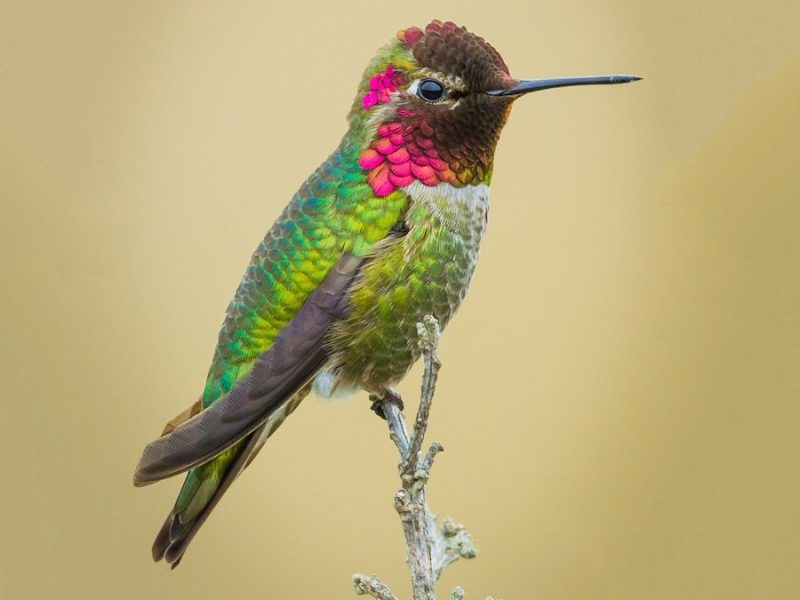
Anna’s Hummingbird is a West Coast native that has increasingly been recorded in North Carolina during winter months. Measuring around 3.9 to 4.3 inches in length, males are known for their iridescent emerald-green bodies and brilliant rose-pink throat and crown. Females are less showy but still exhibit green upperparts and lighter underparts with some throat spotting.
One of the few North American hummingbirds that can sing, the male Anna’s Hummingbird produces a series of scratchy and buzzy notes during courtship. They are highly territorial and persistent, often hovering and diving aggressively at intruders. These birds can survive in colder conditions better than many other species, using a state of torpor to conserve energy during chilly nights.
In North Carolina, Anna’s Hummingbirds are rare but increasingly observed, especially near the coast and in the southern Piedmont. They are typically spotted at feeders and flower gardens where nectar is available through the winter. Because of their early breeding season in the West, some individuals may already be showing courtship behavior when seen in the East.
Originally confined to the Pacific coast, the range of Anna’s Hummingbird has expanded significantly in recent decades. This is largely due to the proliferation of hummingbird feeders and ornamental plants. As a result, vagrants are now reported with growing frequency in the eastern U.S., including a few scattered sightings in North Carolina during mild winters.
Green Violet-ear (Colibri thalassinus)
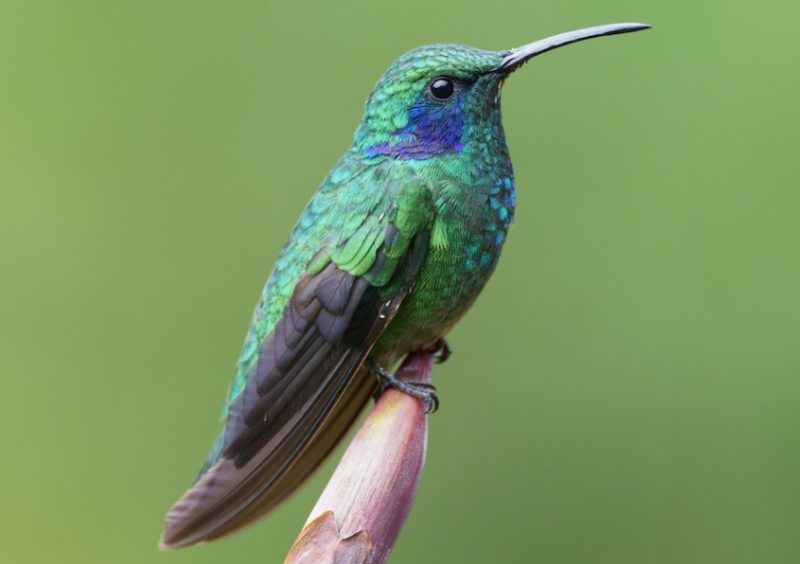
The Green Violet-ear is a brilliantly colored hummingbird that only rarely shows up in North Carolina. It measures approximately 4.3 to 4.7 inches in length and features vibrant emerald-green plumage with a darker violet patch on the sides of the neck, which is most visible in adult males. The wings and tail are typically dark, and the overall effect is a dazzling, jewel-like appearance in sunlight.
This species is known for its loud, repetitive calls and active behavior. Males may sing continuously while perched and are known to chase off intruders from flowering shrubs or feeders. Their flight is fast and direct, and they can often be heard before they are seen due to their distinctive vocalizations.
Green Violet-ears do not breed in North Carolina and are only recorded as rare vagrants, typically during spring or fall migration. Most sightings come from wooded suburban areas where flowering plants or feeders may temporarily attract them. Their size and coloration make them easier to distinguish from other hummingbirds if observed closely.
These birds are native to montane forests from Mexico to northern South America. Their tendency to wander has led to occasional records as far north as the United States. When they do appear in North Carolina, it is usually for a brief period, and such occurrences often draw attention from local birders due to their rarity and vibrant appearance.
Green-breasted Mango (Anthracothorax prevostii)

The Green-breasted Mango is another rare hummingbird species recorded sporadically in North Carolina. It is a large hummingbird, measuring about 4.3 to 5.1 inches in length, with a long, slightly curved bill. Males are glossy green above and below with a bold, blackish stripe down the center of the chest, while females show a white underbelly bordered by green sides and a dark central stripe.
These hummingbirds are known for their strong and purposeful flight. Males can be aggressive at feeders and during courtship, often perching prominently to display their vivid plumage. Their behavior at feeders is similar to other large hummingbirds—they chase intruders and may vocalize with sharp, chipping calls.
In North Carolina, Green-breasted Mangoes are very rarely seen, and most sightings occur during late summer or fall. These are typically isolated individuals likely displaced during migration or storms. They are most often spotted in gardens or suburban areas that maintain hummingbird feeders into the cooler months.
Native to Central America and parts of northern South America, the Green-breasted Mango sometimes strays into the southern United States. Although North Carolina is well outside its expected range, a few individuals have appeared over the years, making it one of the more exotic hummingbird species on the state’s rare bird list.

